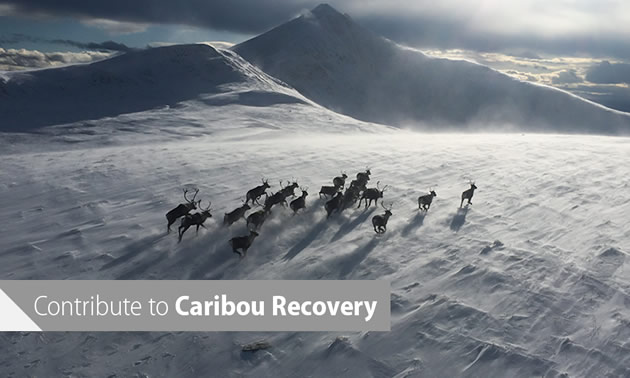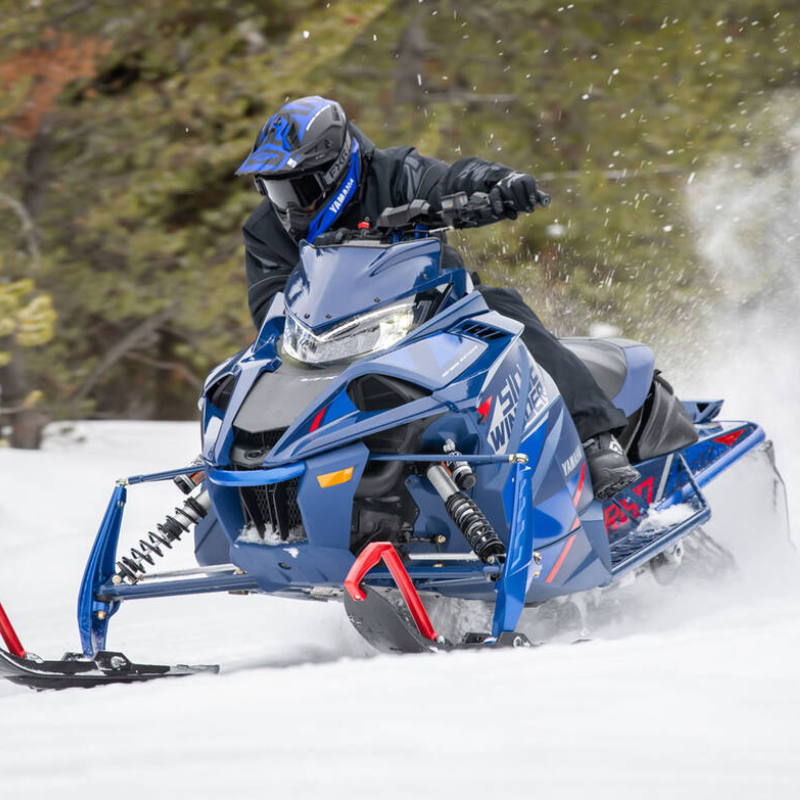The public is invited to community engagement sessions to provide feedback on two draft agreements to conserve southern mountain caribou populations.
The community engagement sessions are scheduled as follows:
McBride – Tuesday, April 23, 5:30 p.m. to 9:30 p.m., Robson Valley Community Centre, 441 Columbia St.
Valemount – Wednesday, April 24, 5:30 p.m. to 9:30 p.m., Valemount Community Hall, 101 Gorse St.
Vanderhoof – Thursday, April 25, 5:30 p.m. to 9:30 p.m., Nechako Valley Secondary School, 2608 Bute Ave.
Clearwater – Monday, April 29, 5:30 p.m. to 9:30 p.m., Clearwater Secondary School 440 Murtle Cres.
Cranbrook – Tuesday, April 30, 5:30 p.m. to 9:30 p.m., Prestige Rocky Mountain Resort, 209 Van Horne St.
The two draft agreements have been developed under Section 11 of the federal Species at Risk Act.
A draft Section 11 agreement between British Columbia and Canada sets a framework for co-operation between the two governments to recover southern mountain caribou.
A draft partnership agreement between B.C., Canada, West Moberly and Saulteau First Nations proposes specific habitat protection and restoration measures to recover the central group herds of southern mountain caribou.
Staff from the provincial and federal governments will share information about the draft agreements and will be available to answer questions.
Feedback collected from these sessions will help inform the final agreements.
Backgrounder:
The Provincial Caribou Recovery Program is a long-term commitment that includes all B.C. caribou herds in a comprehensive and uniform approach to conservation, based on traditional knowledge and science.
The province has already committed to $47 million over 5 years for caribou recovery efforts.
For more information on Provincial Caribou Recovery Program please view the Provincial Caribou Recovery Program Overview and the Provincial Caribou Recovery Program Annual Report 2017/2018 or visit www.gov.bc.ca/caribou
Caribou Recovery Program
The caribou is an iconic animal in Canada, a symbol of the ability to thrive in the wild northern nation in which we live. In fact, we carry its image with us in our pockets every day – the caribou has graced the Canadian quarter since 1937.
For thousands of years, Indigenous peoples hunted caribou, and many continue to do so today. Caribou are still found across the nation, and in the boreal forest and arctic regions of other northern countries. British Columbia is home to the woodland caribou, Rangifer tarandus caribou. The herds found in its mountainous mature forests are an important part of the natural food chain and the rich biodiversity in the province.
Sadly, like many wildlife species around the world, caribou numbers are declining in Canada. Caribou have declined from 40,000 in B.C. in the 1900s to approximately 15,500 caribou today. In the past three decades, many B.C. caribou herds have become threatened. The federal government has increased its efforts under the Species at Risk Act to protect them, while the Province has used its own policies and targeted management plans.
Today, the province is home to 54 herds of woodland caribou that reside in three distinct types of habitat:
- 16 herds of mountain eco-type caribou live in mountainous terrain
- 32 herds of northern eco-type caribou on low-elevation or high-elevation winter ranges
- 6 herds of boreal eco-type caribou who live year-round in muskeg and peat wetlands of the boreal forest
Wildlife managers and biologists have monitored and devised recovery programs for specific caribou herds in B.C. for many years. Despite their significant efforts, herd numbers keep dwindling, while threats to caribou and caribou habitat keep growing.
All six of the boreal herds and 23 of the southern mountain herds are decreasing. Of the herds in B.C., 14 have fewer than 25 animals. Only three of the southern mountain caribou herds saw improvements from recent trials of maternal penning and predator reduction. Currently, scientists do not have accurate counts of herd size or population trends for many of the northern herds. This uncertainty is another reason to step up our game.
The main threat to most caribou populations is a high rate of predation by wolves, bears and cougars that is out of balance from the natural cycle. This can happen when natural events (forest fires) and human activity (such as logging, mining) convert large areas of mature forests to young forest landscapes. These young, open forests provide ideal foods for other deer, elk and moose. These ungulate species are the primary prey of wolves and cougar. However, as these prey species move into caribou habitat, they are followed by wolves, which then hunt the caribou as a secondary prey.
Woodland caribou living in mountainous areas graze mainly on tree lichens found in mature forests, or on lichens that grow on the ground. As a result, caribou are highly dependent on old growth forest and alpine areas for critical food sources. The loss of mature forests and alpine regions from logging, other human activity or forest fires reduces the caribou’s main food source, which may affect their health, pregnancy rates and calf survival.
Roads, trails, and seismic lines create new routes that make it easy for predators like wolves to reach caribou herds. Forestry, mining and recreational activities often disturb the caribou and cause them to leave their preferred habitats for less desirable sites. Climate change brings more challenges, as extreme or unusual weather events and other changes alter the caribou behaviours, habitats and ecosystems in subtle ways we are still striving to understand.
All of these stressors can add up and threaten to overwhelm both the struggling and healthy herds of caribou. Our increasing intrusions into the caribou’s habitats now require us to try to repair those disturbed habitats, alter our activities and take other measures to help the caribou herds recover. We must act quickly.
The Province will move ahead with plans to strengthen the ways it can protect and enhance its caribou herds and their habitats. As it does, it must work closely with Indigenous communities, with many other groups with a range of economic and environmental interests, and the Government of Canada.
In order to respond to these challenges in a meaningful way, we are developing a strong, disciplined, comprehensive and transparent plan of action to address the unique cultural, legislative and ecological conditions of our province.
We intend to be a leader in stewardship of caribou in Canada – with a made in B.C. response. This plan outlines how the Province will ultimately restore its caribou populations and their habitats.







